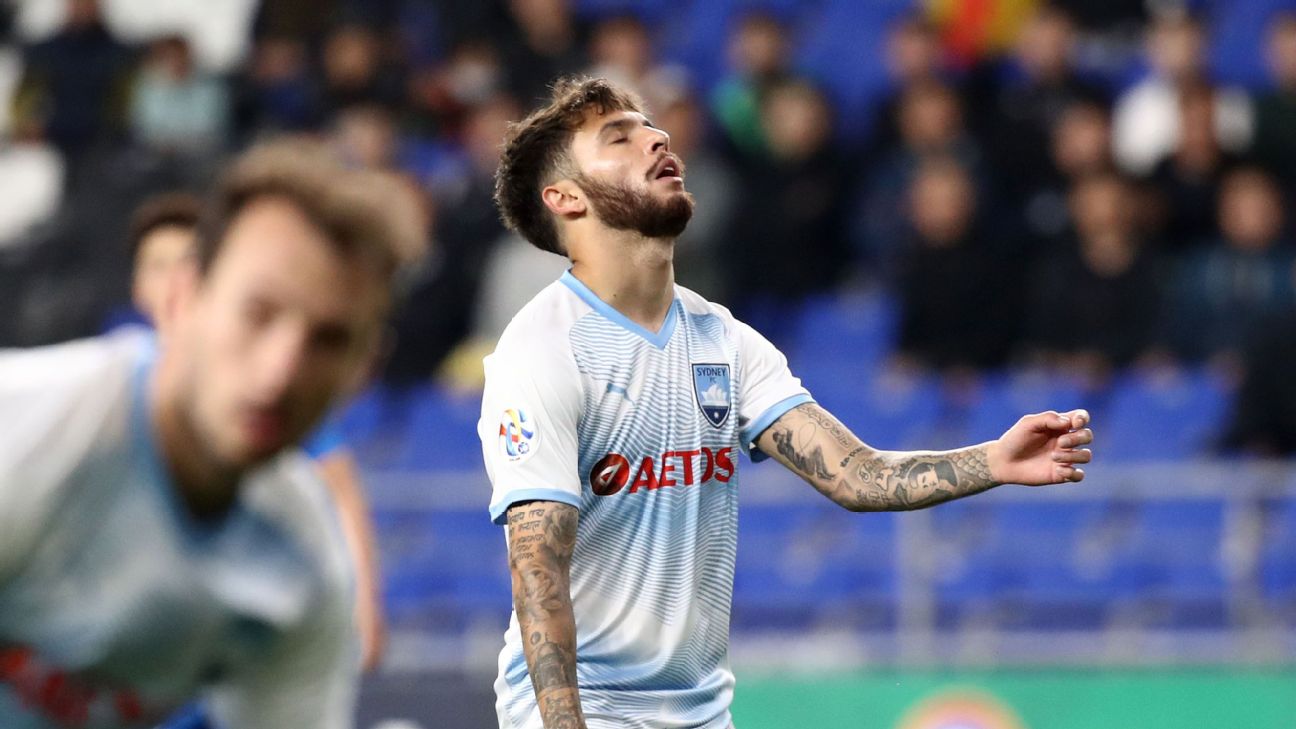


Melbourne Victory’s 4-0 loss to Daegu FC on Wednesday night was a game that meant nothing, but meant everything.
With an A-League semifinal against Sydney FC beckoning and Kevin Muscat’s side already eliminated from the AFC Champions League, it was justifiable to take 15 players — mostly from the youth ranks — to South Korea.
In isolation, the result could be deemed tough to take, but inconsequential. The points may not have mattered, but in football one can learn from every game.
There was something to learn from Josh Hope staring only at the ball between his initial challenge and attempt to clear, before fouling Kim Dae-won and handing Daegu the lead in the ninth minute. There was something to learn from Jack Palazzolo’s rushed and heavy pass backwards to Corey Brown when he had space to dribble forward and gain field position in transition. There was something to learn from Victory’s first shot coming on the stroke of half-time, after a hoof up the pitch from Matthew Acton.
Ultimately, with a starting 11 comprised of 10 Australian players, the result and performance was a suitable punctuation mark for another substandard season in Asia’s premier club competition.
The subject of Australian teams in Asia has been a lingering one, and since the Western Sydney Wanderers’ triumph in 2014, the tone of its discussion has grown increasingly critical. Another season has now passed with all three A-League teams sent packing well before the Champions League’s knockout stage.
The numbers grow stark. Victory’s defeat on Wednesday means that in the 70 games since that the Wanderers’ 2014 final win over Al-Hilal, the record of Australian teams stands at 18 wins, 19 draws and 33 losses. The total goal difference is -44, while only one team finished with a positive goal difference (Western Sydney in 2015) in that time.
– ESPN’s A-League Team of the Year
– Labinot Haliti returns to the Western Sydney Wanderers
It is important to note that this record also includes qualification games, because aside from Sydney and Melbourne Victory’s progression to the knockout stage in 2016, only once has the A-League’s third-placed side qualified since then. It all contributes to Australia’s AFC coefficient ranking, and the loss of an automatic Champions League berth to Thailand.
Myriad reasons have been highlighted as the cause of Australia’s poor club performance in Asia, from truncated scheduling to travel distance and the consequent loads that can be placed on players within that schedule, to comparative investment, to underestimation of the opposition and a lack of seriousness conveyed towards the tournament as a whole.
As Seneca once wrote, “A plant which is frequently moved will never grow strong.”
Because all those reasons, for their varying degrees of validity, are arguably based on a flawed idea — that to begin with, Australian teams are on the whole good enough to compete in Asia on the pitch.
Evidence over the years strongly suggests that both on a technical and tactical basis, they are not.
Although it can be deemed imperial to compare Europe to Asia, it is hard to ignore Croatian football’s rise up UEFA’s coefficient rankings, gaining an automatic Champions League place for 2020-21.
Five European spots will go to a 10-team league that earns far less than those around it in UEFA’s coefficient rankings in terms of television, advertising and gate revenue.
In determining why, one can look to the pioneering Tomislav Ivic, who once said in reference to Hajduk Split’s continental exploits in the 1970s and 80s: “We were a footballing pauper with the greatest wealth that exists — knowledge.”
In context, Australian football is poor in both financial and intellectual senses. The AFC Champions League has best illustrated that, but focus has only ever been placed on the former.
As highlighted earlier in the week, the framing of the game is an issue in the A-League and Australian football as a whole, in both situational and conceptual terms. This is reflected in how the majority of teams and coaches approach games, along with the selection of players, their directives and the varying degrees of scope given to players with differing attributes.
At all levels. This is not exclusive to the A-League. On a much wider scale, it then impacts what the public in Australia values in football, relating to tactical approach, preference to aforementioned attributes and what is expected of individual players.
While this aversion to risk is arguably sustainable in the A-League, given its structure, what the Champions League has tended to do is demonstrate the flaws in that framing and how it manifests in respective systems.
This is not to say risk-aversion is not apparent elsewhere in Asia. Persepolis FC’s tepid approach over two legs in last year’s final defeat to Kashima Antlers is the most notable example of that.
If not all, the bulk of Australian matches in Asia are characterised by midfields unable to provide all-important optionality and consequent control of play. This, with a higher overall tempo in mind, only increases the burden placed on foreign talent in attack.
Football Federation Australia’s introduction of split rounds in the domestic season was theoretically supposed to accommodate teams competing in Asia, but the past two seasons have failed to have any impact on results.
The nature of Wednesday’s loss is a potentially harrowing precursor, if the recommendation of A-League franchises to actually increase the number in foreign player quotas is passed. Well, unless there are significant changes to the AFC’s 3+1 rule.
Ultimately, what Sydney FC, Melbourne Victory and Newcastle’s performances this season in Asia have underlined is Australian teams can only play one way — with relative effectiveness — on the continent. That is essentially to hang on, try to hit on the break or on set pieces, and hope for the best.
Until those in Australian football recognise there are severe deficiencies in that reality, these results will only continue.
